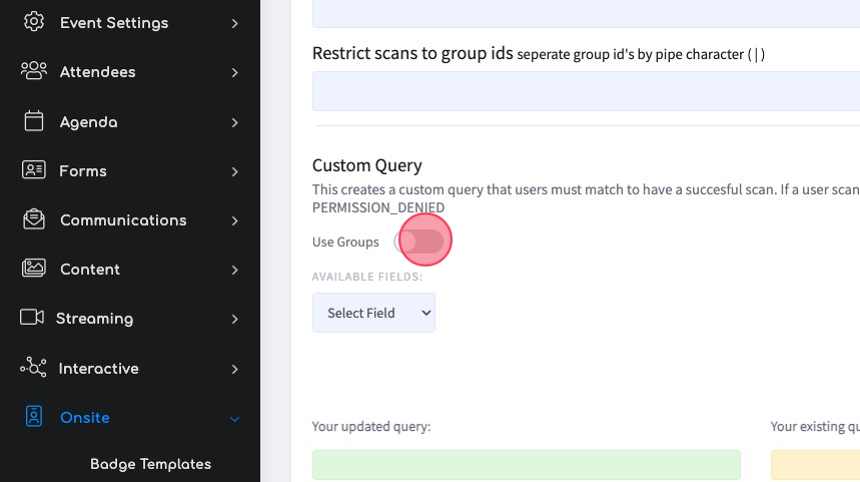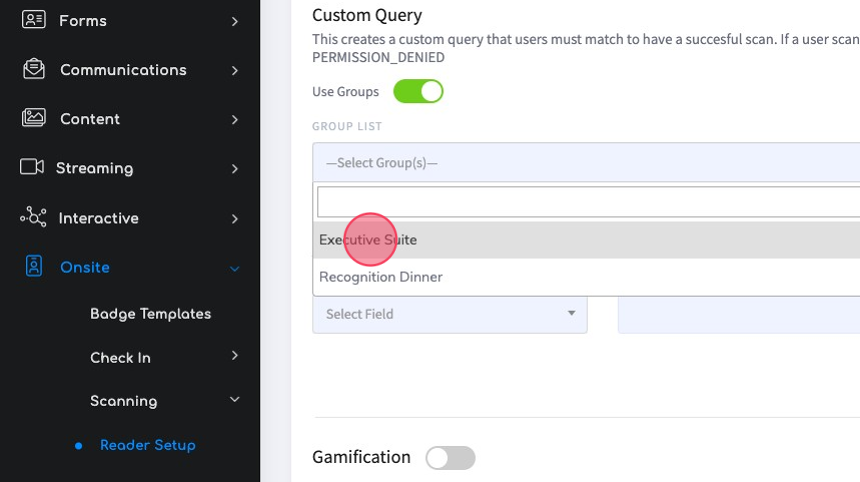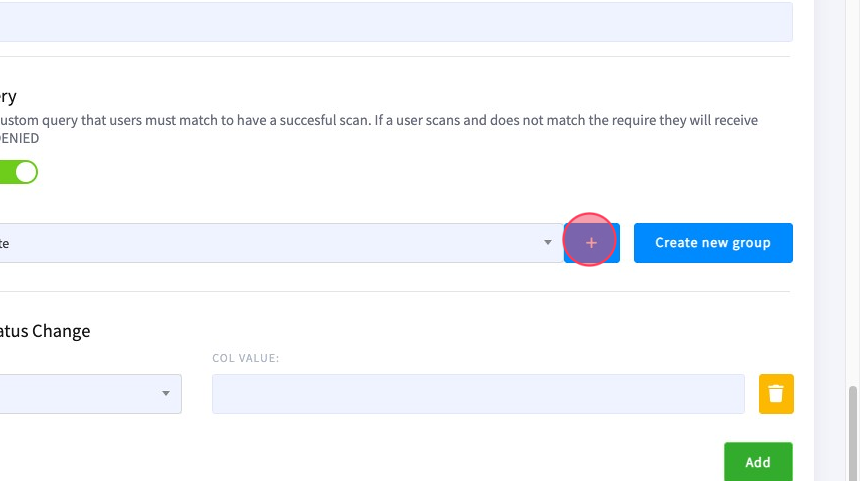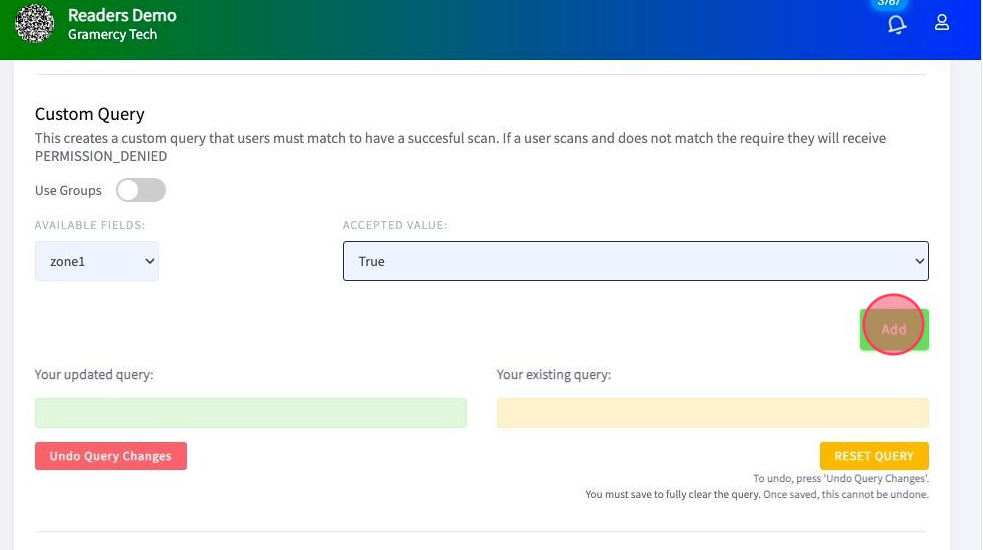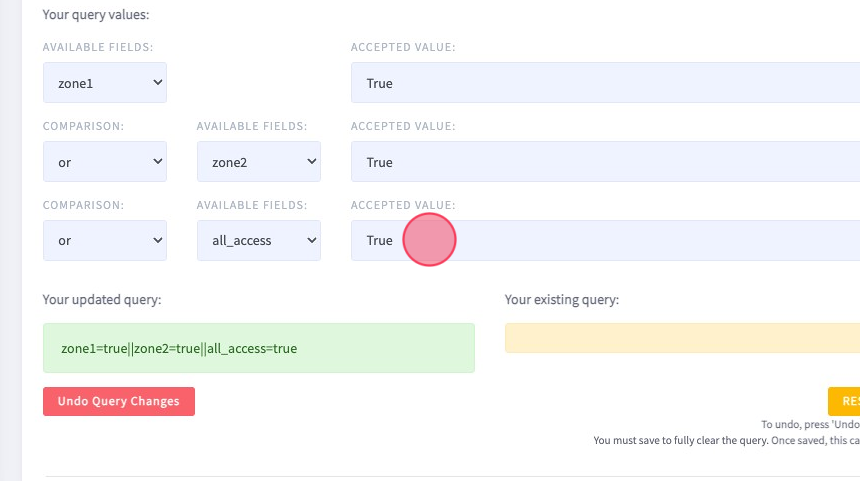Custom Reader Queries
Published May 10, 2024
Overview
Custom reader queries are used to approve or deny attendees' permissions. This is accomplished by restricting access to groups or any attendee field such as organization, region, district, etc.
Setting up Group Access
1. Open your reader from Onsite | Scanning | Reader Setup. Under "Custom Query", toggle on "Use Groups"
2. Select your group
3. Add your selected group(s) by clicking the + icon
4. Click "Save Reader"
Setting up a Custom Query of Attendee Fields
All attendee fields can also be used to create custom compound access queries. You can select any attendee field and the reader will search for that field value. These queries allow you to specify multiple conditions that can be combined flexibly to refine or expand the criteria based on various fields.
For example, zone access control requests commonly use a custom query. In this example, the client requires the creation of four zones and limited access as follows:
1. For zone access control, it is recommended to set up the four zones and an all-access field in the "Attendees | Attendee Settings | Custom Fields" section. It is also recommended to set these fields as "Checkbox" type fields. In this example, we will create a query for access to both zones 1 and 2 and include all access attendees.
2. To begin, open your reader and select "Zone 1" from "Available Fields" and set the "Accepted Value" to "True" and then select "Add" to further include "Zone 2"
3. Since we want attendees with access to "Zone 1" or "Zone 2" we will leave the "Comparison" condition to "or" and select "Zone 2" and set the "Accepted Value" to "True." We will again click "Add" to include "All Access" attendees.
4. Now, we will add the “All Access” attendee types using the “or” comparison and set the "Accepted Value" to "True."
5. Click "Save Reader"
This reader will now allow access to attendees who have access to either zone 1, zone 2 or all access permissions. So based on the client's requirements, the catering team, customers, and the leadership team along with event staff will be permitted access. Sorry suppliers and VIPs!
A Note About Compound Queries Using the “And” Statement
The "and" statement in queries is used when you want to narrow down search results by requiring multiple conditions to be met simultaneously. Essentially, it combines conditions so that each condition must be true for the overall query to return a result.
Examples
- Search for employees of Acme organization and are in sales
- Guest attendees in sales and located in the southern region
- Attendees with job title of director and event attendee type of guest
The “and” statement can also be combined with “or” statements to create a compound query.
Examples
- Search for employees of the Acme organization or Roadrunner organization and are in sales
- Guest attendees in sales and located in the southern region or northern region
- Attendees with the job title of director and event attendee type of guest or speaker

